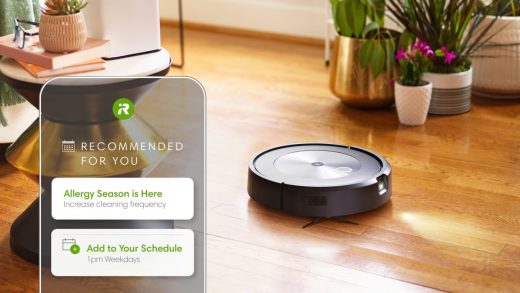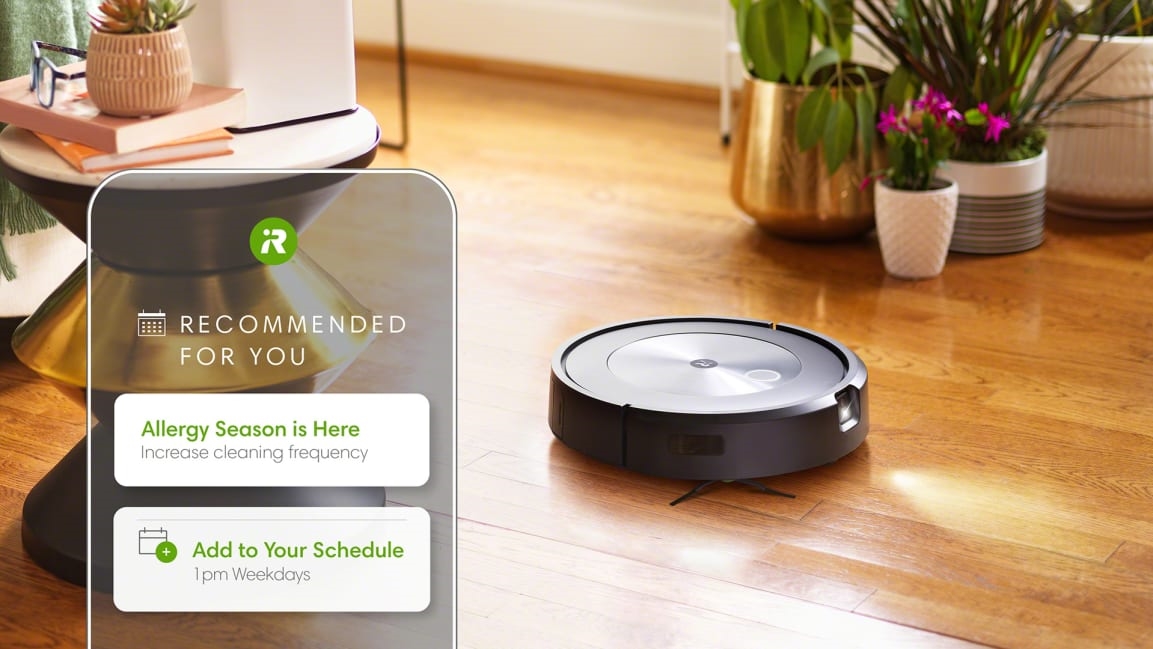Move over, Alexa: A Roomba could soon be the brain behind your smart home
Colin Angle, the CEO and founder of iRobot, believes that tech giants have botched the smart home.
Systems like Amazon Alexa, Google Assistant, Apple HomeKit, and Samsung SmartThings all boast thousands of device integrations, but getting those disparate parts to work well in concert can be a tremendous pain. Instead of trying to connect with everything, Angle believes the way forward is to start over and think smaller.
“Unlike the Googles, Amazons, and SmartThings of the world, I believe in a walled garden,” Angle says. “I believe the experience trumps universality.”
iRobot, best known for its Roomba robot vacuums, is now in the middle of trying to fulfill that vision. The company’s iRobot Genius software has just added a bunch of new features to help its vacuums better understand what’s happening in the home, and it’s releasing a new high-end Roomba that can steer around power cords and pet waste.
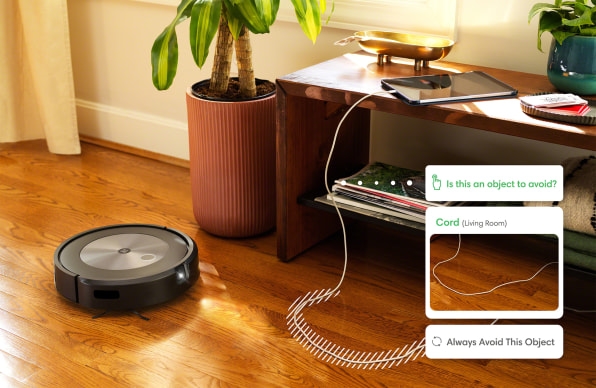
[Photo: iRobot]
While those features exist primarily to clean your floors right now, Angle says iRobot’s eventual goal is hook the company’s home awareness into other smart home products, including ones that aren’t strictly related to vacuuming or mopping. To do that, iRobot will look to build close partnerships with other device makers instead of inviting everyone into its ecosystem. This walled-off approach may be by necessity—iRobot is a relatively small company after all—but its ability to map out homes and send robots into every corner could give it an advantage that other smaller smart home brands might lack.
“I think we need to have closer partnerships, tighter integrations, and more automation in how your home is managed, configured, and maintained to create an overall experience that the average user can take full advantage of,” he says.
Smarter vacuums first
iRobot’s bigger smart home plans started taking shape about a year ago, when it released the first version of its Genius software as a free upgrade for its existing iRobot app. That update allowed Roombas to identify areas that need more frequent cleaning, recommend cleaning schedules based on user behavior, and flag obstacles that users might want to permanently avoid in the future.
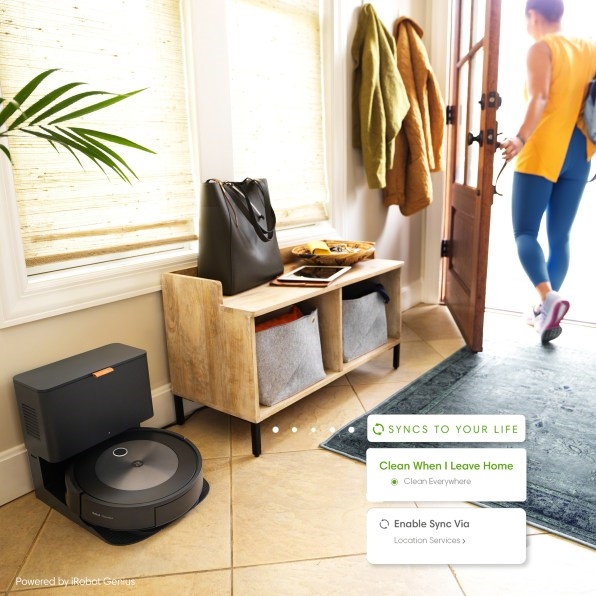
[Photo: iRobot]
The new iRobot Genius software extends those ideas a bit further. New users will see suggested room names after their robot comes up with a floor plan, so they can more easily ask nearby Alexa or Google Assistant speakers to start cleaning specific rooms. iRobot is also adding estimated cleaning times, a geofence feature to help Roombas clean when no one’s home, and the ability to move quietly between parts of the house for spot cleaning.
The Roomba j7+ vacuum, meanwhile, can automatically avoid pet waste—iRobot says it’ll replace any vacuum that fails to do so—and can send pictures back to the user for any obstacles it might want to permanently avoid in the future.
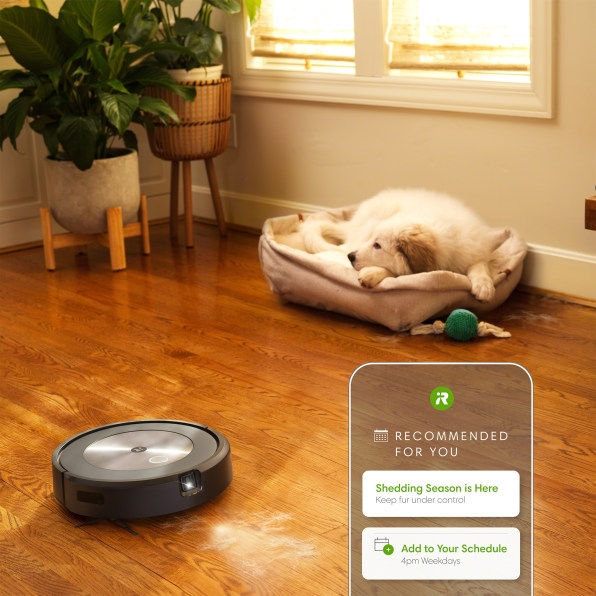
[Photo: iRobot]
In the near term, this is all part of iRobot’s plan to differentiate through software as robot vacuum hardware becomes increasingly commoditized. (Competitors such as Neato, Eufy, and Ecovacs all offer robots with advanced features such as room mapping, waste disposal, and basic obstacle detection.)
“The robot intelligence system you choose starts to feel a lot like the personal computer operating system that you choose,” Angle says, alluding to how you might pick between Mac or Windows before figuring out which laptop to buy.
Broader ambitions later
The bigger picture is still murky, but Angle says a lot of what iRobot is doing now will ultimately have applications beyond just cleaning floors. Angle floats of the idea of having a Roomba double as a roving security camera, and suggests that it could work in tandem with air purifiers to clean more or less often based on environmental conditions. It might even be able to adjust room lighting when it knows that no one’s around. Angle won’t give a timeline for these kinds of features, but says iRobot will start testing them in beta before rolling them out more broadly.
“The scope of Genius is far larger than simply making your Roomba work better,” Angle says.
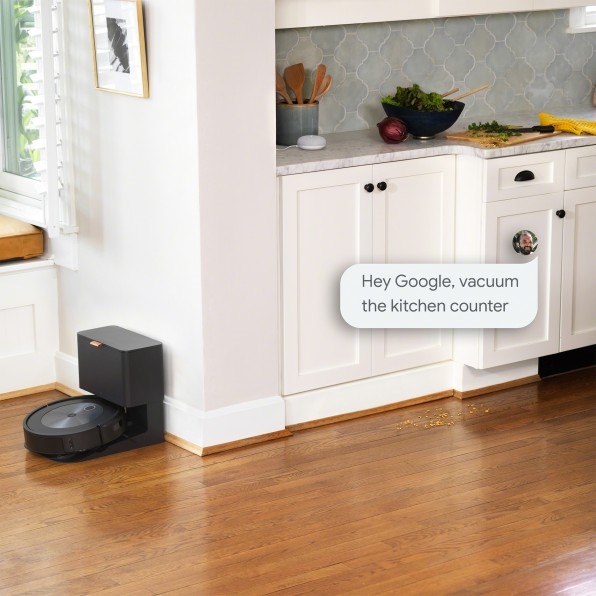
[Photo: iRobot]
Angle argues that iRobot is better equipped to automate those tasks than other smart home ecosystems, simply because its robots are set up to map out your entire home and understand your schedule. In other words, it will understand context in ways that other ecosystems often don’t.
“What we can bring to the table is knowing where everything is,” he says. “Because you’re living with us in a partnership, we probably have a pretty good idea about how you like your house to run.”
These could easily turn out to be empty promises, but the underlying concept is refreshing compared to the alternative. For several years now, systems like Google Assistant, Amazon Alexa, and Apple HomeKit have been connecting all kinds of devices with little regard for the quality of those integrations. The result has been a mishmash of competing standards and protocols, along with constant headaches when things fail to work as advertised.
Only now are the tech giants starting to embrace true interoperability, rallying the industry behind a common protocol for smart home devices. But whether any of that will elevate the smart home beyond the purview of geeks with time to kill remains uncertain. Perhaps Angle is right to insist on a reboot.
“I would love an all for one and one for all smart home experience, except it’s so hard,” he says. “I’d settle for a great experience first, then grow who’s allowed in, as a radical new approach.”
(68)

